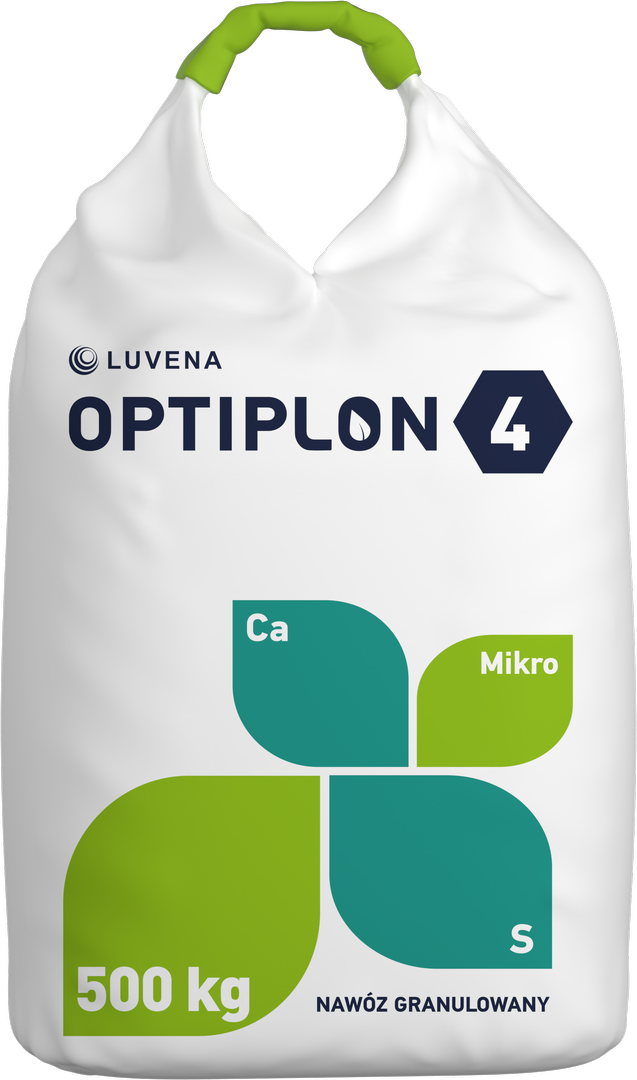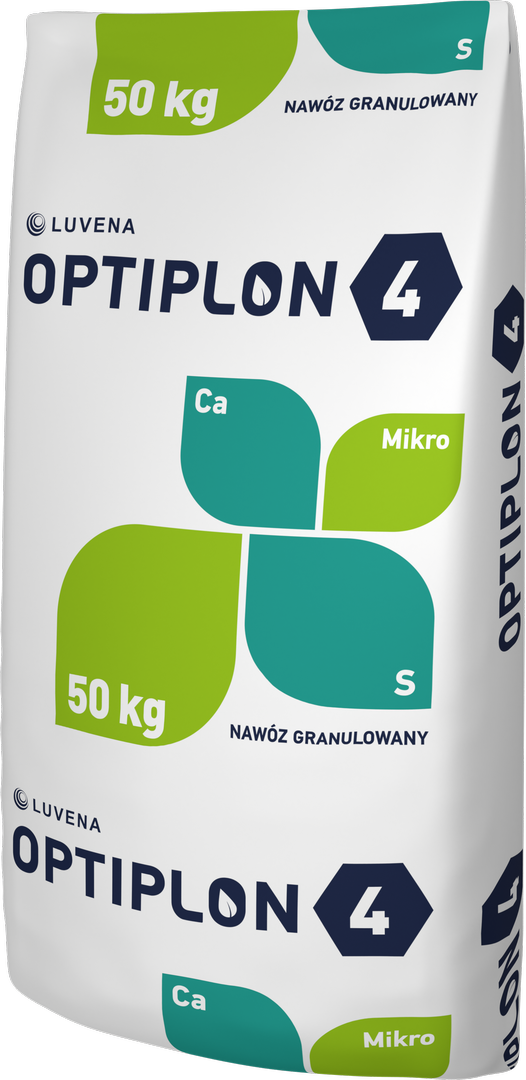

OPTIPLON ® 4
EU FERTILISING PRODUCT ● GRANULATED ● COMPLEX MACRONUTRIENT FERTILISER
NPK (Ca, S) 4-14-30 (10-9)
- granulated fertiliser intended for all types of agricultural plants
- a valuable source of phosphorus in different chemical forms so that the phosphates from the fertiliser are released throughout the growing season
- the ammoniacal nitrogen contained in the fertiliser granule binds well in the soil and supports the uptake of phosphorus, both from the fertiliser granules and from the soil
- the added sulphur improves the efficiency of nitrogen fertilisers and also improves the defence of the plant against pathogen attacks
- can be used in a set of pre-sowing cultivation measures for winter plants (rapeseed and cereals), ensuring an adequate supply of nitrogen, phosphorus and sulphur for the plants in autumn
- when fertilising spring plants and permanent grasslands, it provides the full dose of phosphorus and increases the amount of available nitrogen in the first vegetation period
- the fertiliser can be successfully recommended for localised fertilisation performed together with corn sowing or for a strip-till fertilisation system
CHARACTERISTIC CARD arrow_forward
CERTIFICATE OF CONFORMITY arrow_forward
TECHNICAL SPECIFICATIONS arrow_forward

